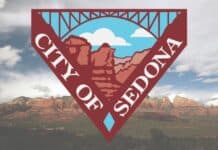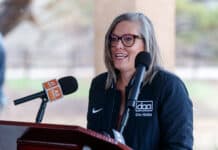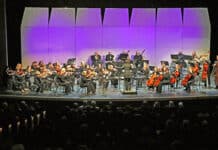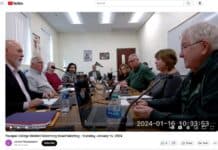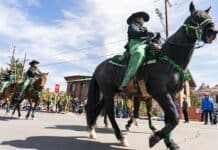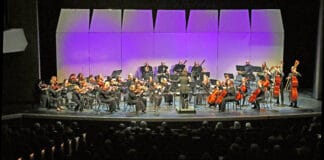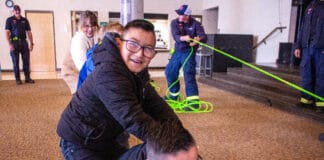It’s been six months now since the city of Sedona installed parking meters in Uptown. And by all accounts, so far, so good, according to Sedona Assistant City Manager Karen Osburn.
“We haven’t had any negative feedback — or even inquiries in terms of the system — in quite some time,” Osburn said. “We’re assuming that people understand that the spots on Main Street are paid parking, they accept that, and they’re being utilized. It’s been very, very quiet.”
The 101 paid parking spaces became operational on June 28. In order to develop this program, the city worked with the Uptown Paid Parking Implementation work group made up of merchants and property owners, the Sedona Chamber of Commerce, the Uptown Rangers and representatives from the city.
Parking along Main Street is $2 an hour from 9 a.m. to 6 p.m., seven days a week with the remaining hours of the day being free. However, these hours are subject to change for special events. The work group recommended an initial fee structure, which received approval from council.
The first 15 minutes is free, then the first three hours will be $2 each with $4 for the fourth hour and $6 for the fifth. But, in order to have the flexibility and authority to modify rates up or down based on the demand model, council also approved an hourly rate of $1 to $4 for each of the first three hours, $2 to $8 for the fourth hour and $4 to $12 for the fifth hour.
The target occupancy is 85 percent. Osburn said there were a few concerns about the price point of $2 per hour, and given the fact that Main Street has still been consistently over 90 percent occupied, even during this slower season, the price point seems to be set well. Should they consistently fall below the 80 to 85 percent occupancy target, the city will lower the pricing.
However, over the first six months, pricing has not been adjusted based on demand. Now with six months under the city’s belt, Osburn said they have a good amount of data in terms of seasonal use but that the true test will be this spring, which is the busiest time of the year in Sedona.
And, she said that even during slower times, the occupancy has been at a very high percentage. So, she said it appears that the $2 an hour rate has not deterred many from parking on Main Street. And even though the option is there to adjust pricing based on usage, the city has not yet done so.
“Now that we’re entering into a slower time of the year, we’ll look at reducing the cost, perhaps, if the occupancy reflects that,” she said. “However, if we would have gone strictly based on the formula, occupancy would have dictated an increase to the fees. We did not want to increase anything for the first six months. We may not even increase it until we have a full year’s worth of data in order to see how things are during the busiest time of the year.”
One of the major concerns when talk of paid parking began came from merchants who worried that visitors would refuse to pay to park and thus go to other shopping areas in town or the Village of Oak Creek. Osburn said so far that doesn’t appear to be the case.
The city has been monitoring sales tax collections since implementation and has compared similar businesses of those in Uptown to West Sedona and the gallery district and they have not seen a measurable difference, she said. When things were flat in Uptown over the summer, it was that way elsewhere.
“To us, this seems like an indication that paid parking for those 101 spaces is not having a negative impact on sales,” Osburn said. As of Tuesday, Dec. 19, the city had collected just shy of $240,000 from the parking meters. This money will be put into a special fund for projects earmarked for Uptown. So, during the first year, that amount could easily top $500,000. But of that, $60,000 goes toward things such as software upgrades, data charges and maintenance.
The original $250,000 to install the meters was paid through a separate budget. Parking tickets, which have totaled nearly $40,000 so far, will also be put in that fund. However, because of state fees, the city sees only about one-fourth of the money generated by tickets. And even then, court costs reduce that amount even more. July and August of this year had a lower occupancy than last year on both Main Street and the municipal lot.
The committee did not attribute this to the implementation of paid parking, but rather cited construction in Oak Creek Canyon, reduced summer marketing in Phoenix and the fact that 2016 was the 100th anniversary year for National Parks, Osburn said. “We do know that traffic counts in Uptown were down 9 percent in 2017 from where they were in 2016 indicating there were also fewer vehicles overall,” she said.
That said, occupancy rates on Main Street in September through November in the noon to 4 p.m. period averaged 89 percent. During that same time period on the weekends, it averaged 98 percent. While the metering system has generated more money than expected, Osburn pointed out that its purpose was not simply a way to make money for the city.
“This was to manage the parking demand,” Osburn said. “Pricing is the best way to manage supply and demand. There was more demand than supply so we priced that commodity to better manage that supply and redistribute that demand to the off-street lots that are free. The purpose was to manage demand and mitigate traffic.”
Ron Eland can be reached at 282-7795, ext. 122 or by email at reland@larsonnewspapers.com


